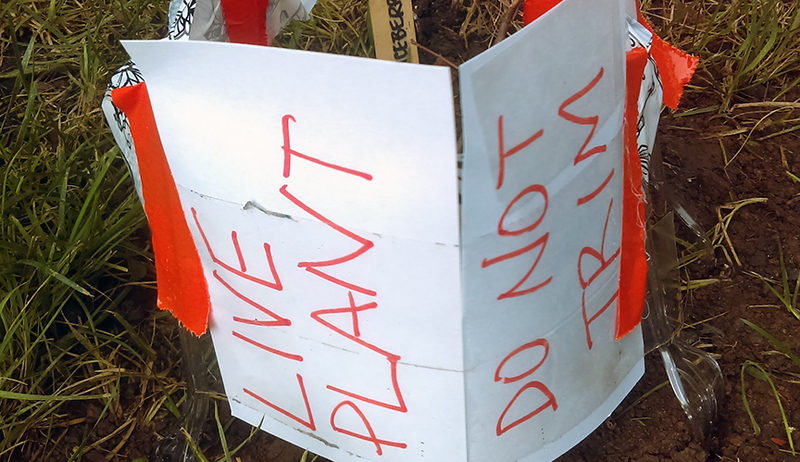
A local nursery with a great reputation for high-quality plants recently closed its doors and liquidated all its inventory. Great deals were made on their remaining plants, and the generous owner donated many trees, shrubs and flowers to community projects. When free plants are offered, my instinct is to willingly accept them with gratitude. However, my planting space is limited, and I have to involve some type of decision-making process.
I spent the better part of a Sunday researching, sorting, re-sorting, rearranging and classifying the free plants I got. Many more days could be devoted to researching a particular plant before understanding its habits, benefits, risks and maintenance needs. But these plants needed to get in the ground, or in a pot, or in the compost. I hated to leave them in limbo much longer.
I promised the educational center where I teach part-time that I’d find some good pollinator-friendly plants to fill in some gaps in their newly landscaped grounds. The inner-city space is open to the public and in a perfect spot to educate the neighborhood about the importance of wise landscaping for wildlife. The beds include a rain garden, a butterfly garden, a medicinal garden, native grasses and a vegetable garden, all accompanied by the soothing sounds of a water feature.
My process in weighing the best use for these free plants was roughly based on these questions:
- Is it native?
- Is it food?
- Is it medicine?
- Is it harmful?
In these questions I consider humans (especially children), wildlife, pets and other plants (or the ecosystem).
The best plants are native, provide food for people, provide habitat for wildlife and have medicinal components. If a plant fits all of the first three criteria, then it probably will not be harmful (although many medicinal and food plants have toxic parts).
Combining some of the nursery’s free plants with other choice plants that a native gardener in my neighborhood propagated, I had a nice selection to offer the education center. We added witch hazel and slender mountain mint to the medicinal garden; great blue lobelia, liatris, mist flower and a native sunflower to the butterfly garden; buttonbush and spicebush to a marginal area near the parking lot; Virginia sweetspire in a bed near the front entrance; and a serviceberry on the side of the building near an air conditioning unit.
Two weeks later, the plants are still there, which is an accomplishment in itself. Previously, the director of the center had bought several flowering plants at an end-of-summer sale, and the only thing left of them was a cluster of depressions in the ground. They had been stolen, or, to put it optimistically, someone else thought they were welcome to take free plants from the ground. At least the thieves took the time to dig them out carefully. We can only hope that they planted the flowers in someone’s backyard, providing bird and butterfly habitat nearby.

Another risk to the plants is the free yard service that a local landscaper donates to the nonprofit education center. Some zealous weed-trimmers hacked down the serviceberry before I could mark it clearly. I hope the vigorous pruning didn’t kill it, and that it will rest and prepare its roots for a spring comeback.

The education center got the top-ranked free plants. The medicinal herbs, such as skullcap, wormwood and all-heal, have been planted at my friend’s herb farm. I’m sneaking in chocolate and apple mints along with wild basil in the concrete-confined space between my front yard and the street.
I am still working on finding the right homes for the plants that didn’t make the cut. I honestly don’t know what I’ll do with the plants that could spread and become invasive, such as vanilla grass and common tansy. They fit the food and medicine criteria, but they certainly aren’t native, and they could harm the ecosystem. It’s a tough decision, but sometimes free plants aren’t worth the price.




